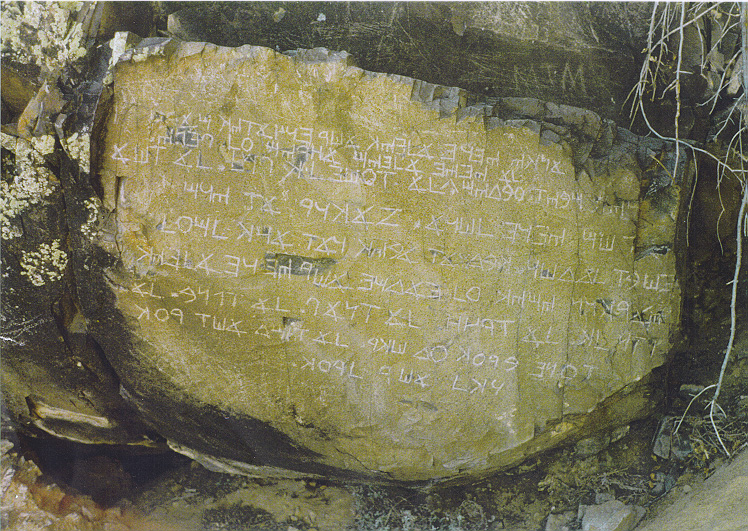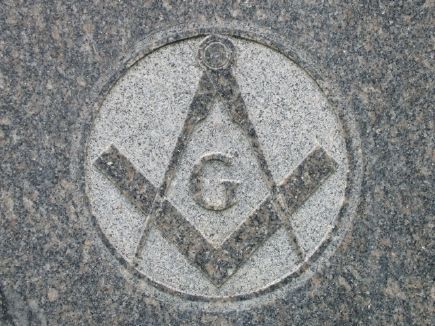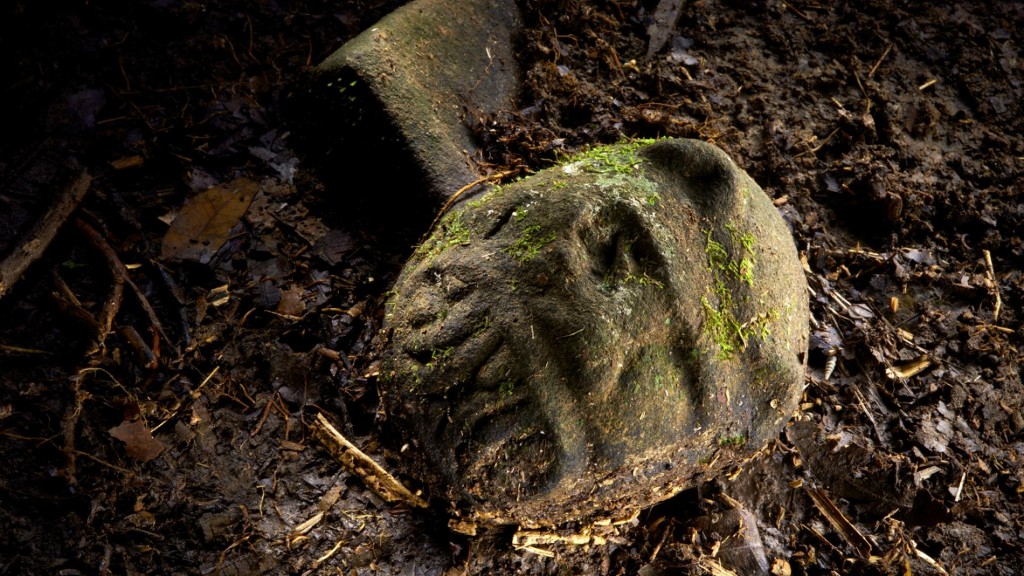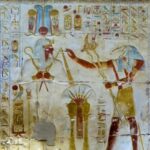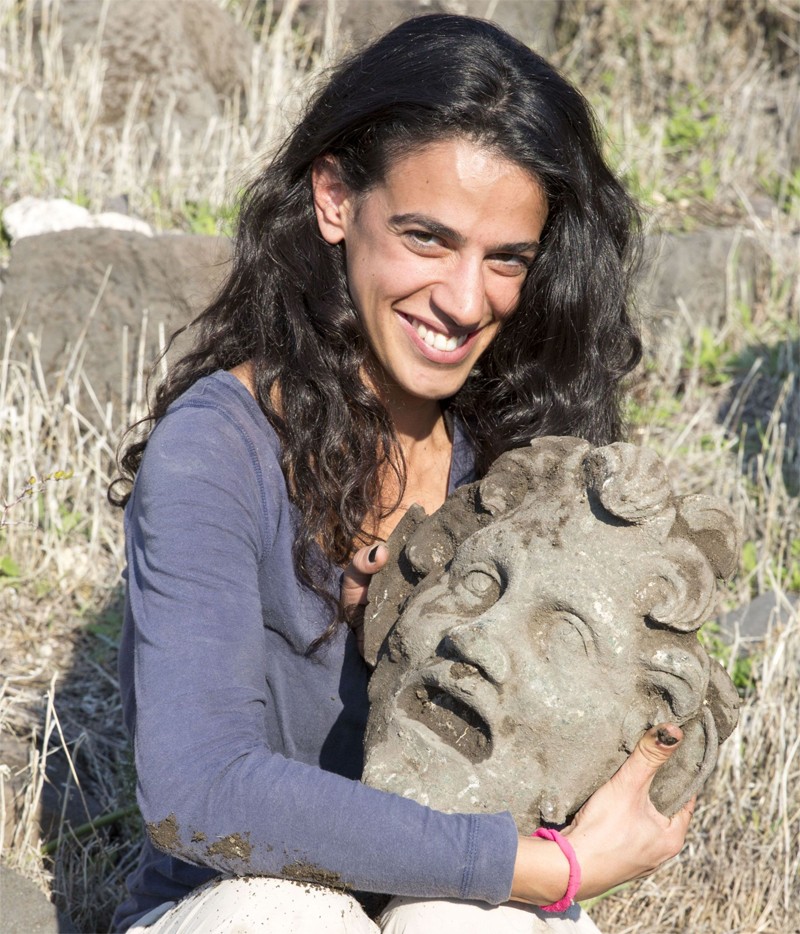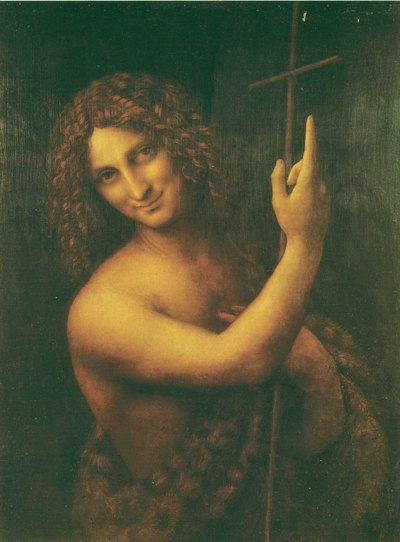In my search for the ancient meaning of Tyre, I have come to the etymological revelation that it is derived from the word for special type of ancient Egyptian limestone rock called today “Tura or Tora.”
Today, you will find these holy stone quarries of Tyre, Egypt located in the modern town of Tora in the Cairo Governorate.
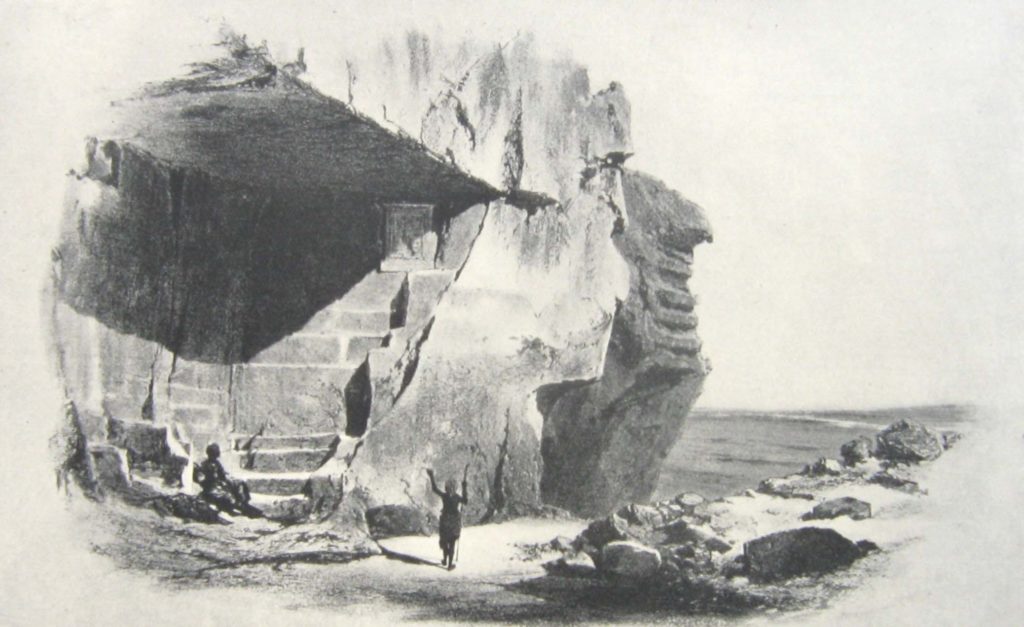
Please keep in mind that as you read my research below, the Old city of Tyre is documented in Masonic mythology as being the home to the de-facto king of the Freemasons, Hiram Abiff. A person who I have also connected to in previous articles to the first King of Tyre, Abibalus (Obediah, Abi-Beda etc.) and also King Saul who was credited biblically as the first king of the combined kingdoms of Judah and Isreal.
It is also important to note that the men of Tyre ie: The Tyranians were not only builders – ie: Masons, they were also employed in the arts of shipbuilding, writing, linguistics, history, Babylonian magic, religion, weapons-making, military planning, and most of all, commerce which all can be easily corroborated via historical, biblical, and now scientific accounts which validate one another.
THE MYTHS OF TYRE AND THE MANY DIFFERENT SPELLINGS THROUGH TIME
In studying the etymology of the word Tyre, I have found that it has been spelt variously over the last 2,000 plus years as Tiryns, Tyrsenoi, Tyresenes, Tyros, Tyrus, Tyrosh, Tyrion, Tyrseni, Tarshish, Tarsus, Tura, Turan, Tora, and or Tursha to name a few.
To give you a small example of the different spellings found in the course of my research, we can find that Tyre is spelt numerous ways in the Bible such as Tarshish – (‘the ships of Tarshish’) and xxxviii. 13 (‘merchants of Tarshish ’).
The expression ‘the ships of Tarshish’ which occurs several times in the Bible (1 K.x.22: xxii.48: Ps. xlviii. 7: Is. ii. 16: xxiii. l, 14 (in connection with Tyre) and has also been identified with the Hebrew name for Tartessus or South Spain and with Carthage (so the Septuagint Ezekiel and in Is. xxiii. in a passage which refers to Tyre), with Tarsus.
I have also found multiple locations of the city Tyre in which the Mother City was known as Palaetyrus (ancient Tyr) and was located on the mainland in the classical sources. Meaning, there were two Tyres which I will explore more in-depth in a future article.
In Greek mythology, Tyros or Tyro was the Goddess-mother of the Tyrians and Tyrrhenians, or Tyrsenians whose father was named Cretheus (Crete) along with Sidero (Sidon), and Eolus, who are credited as the founders of cities in Hellas.
All the great historians and poets mention the Men of Tyre under the name of the place they call Tyree or Tyry and the people under the appellation of the Tiryns, Tyrsenoi, Tyresenes, and or the Tyrsenians. The Greeks had called the Etruscans by the name of the Tyrsenoi.
As early as the 15th-14th centuries BC, we hear of a place and a people known as the Tiryns who are both expert Masons and mariners of the Sea.
The Penny Encyclopedia gives us this description:
“The Greeks attributed most architectural works § were characterised by rude massiveness and great antiquity to the Cyclopes, and such works were consequently described as Cyclopean. Homer (Iliad, ii. 559) calls Tiryns the ‘walled, or rather the ‘wally ‘Tiryns: and Pausanias (ii.25), 1000 years after him, thus describes the remains, as they existed in the second century of our aera.
“The ruins of Tiryns, he observes, “were on the right of the road leading from Argos to Epidaurus. The wall of the fortification, which still remains, is the work of the Cyclopes, and is built of unwrought stones, so large that not even the least of them could be even moved by a pair of mules.”
In mythology, King Proetus was the reputed founder of Tiryns, was succeeded by his son Megapenthes, who exchanged Tiryns for the kingdom of Argos with Perseus, son of Danaë and Jove, the mythic founder of Mycenae (Pausanias, II., 16).
At the time of the Trojan war, Homer (Iliad, ii. 559) represents it as being subject to the kings of Argos. Subsequently, it was partially destroyed by the Argives.
The date of that event is uncertain; but from two passages of Herodotus (vi. 83, and ix. 28), in which mention is made of Tiryns, it appears that it existed up to B.c. 480, and it is probable that it was overthrown about the same time as Mycenae, B.C. 468. (Clinton, Fasti Hell., ii., p. 425.)
According to Strabo (viii., p. 373), the Tirynthians, on leaving their homes, retired to #. idaurus : according to Pausanias (ii. 25),
There was an ancient tradition that there was an old people called Tyrsenes in the north Aegean Sea who was later identified with the Attic Pelasgians and rulers of Athens.
We read about Tyrsenoi in Homer’s Hymns to Dionysos, about how the god Dionysos appeared as a youth on the sea-shore, and was seized by Tyrsenian pirates (Sea Peoples), who in vain attempt to bind him.
Thucydides identifies the Pelasgoi with the Tyrsenoi.
Tiryns is today called an ancient archaeological site in Argolis in the Peloponnese and the location from which mythical hero Heracles performed his 12 labors.
There is also the legend of the Cretan king’s general named “Taurus” who carried off Europa after having taken Tyre by storm.
When speaking of the Tyranians, the great Roman poet Tibullus had said, “Prima ratem ventis credere docta Tyros.”
It is easy to see how the Greek myths of the Tyrsenoi from Tiryns and the Tyr-senian pirates or the Tyr-senoi can be connected to the Tursha AKA Sea Peoples and ultimately to Tyre. It is in the meanings of these various words where I believe we can easily discover the secret origins of these people from Tyre – the Tyranians (Tyrrhenians)., meaning their original homeland.
Words that I believe can also be etymologically connected to a special book where they document their history and laws known universally as the “Torah” AKA Tur-ah – the Hebrew or Phoenician Bible which is also known as the Old Testament. We also know of these collective writings as the scripture of skrip’-tur in which Moses was given the Laws upon stone tablets of Turs.
THE ETYMOLOGY OF TYRE
All this research leads us to the true meaning of Tyre which I have found is derived from the old word for rock or stone which was anciently called “Tur, Tsur, Tzor, Tor, Tora, Toorah, Tura,” to name a few. These words are variously translated to also mean mountain for it is from the mountain which we obtain the rock or stone to build.
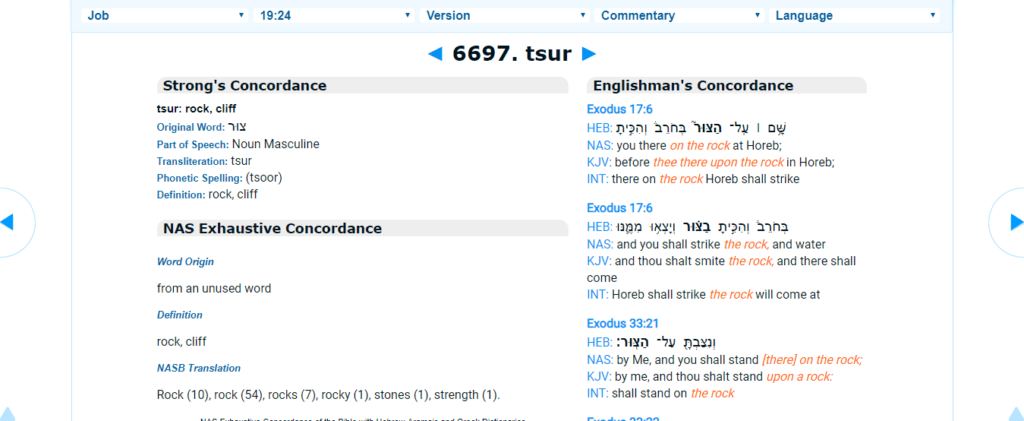
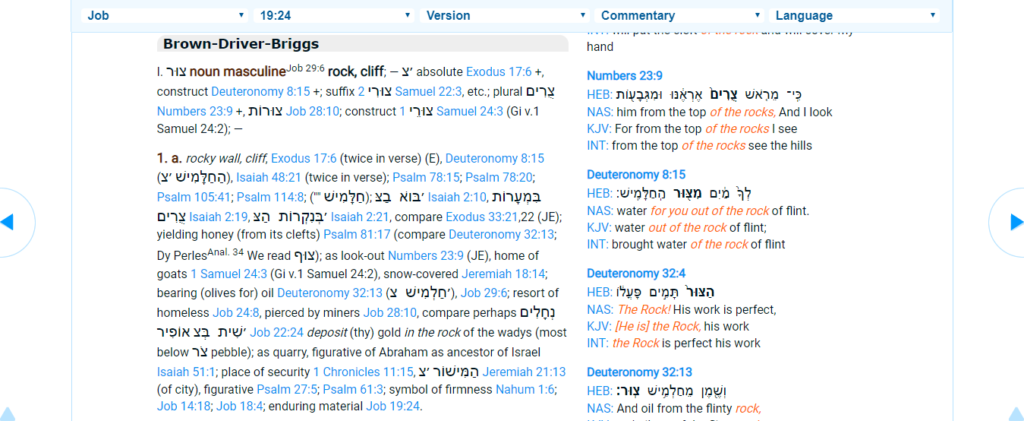
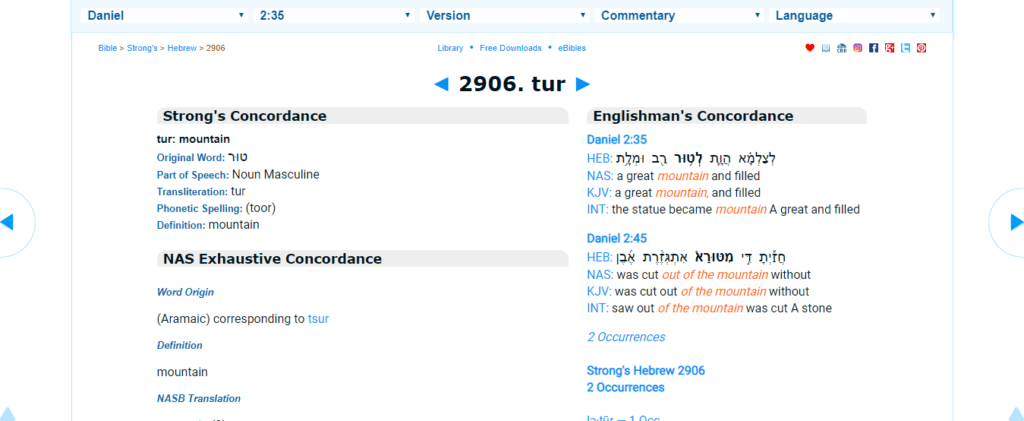
The main revelation of this word is found in one of the oldest cities in the world that housed one of the most infamous of all rock quarries in Egypt and the world.
A city called Tura and someday we may call it again, “Old Tyre.”
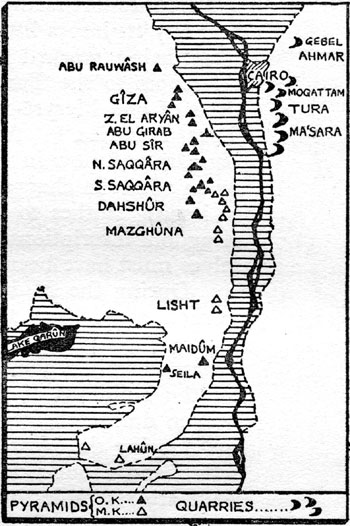
Tura or Tora, Toorah etc. (Egyptian Arabic: طرة Tora IPA: [ˈtˤoɾˤɑ]) is the exact location where Ancient Egyptians or who we may call Masonic Tyranians drew massive quantities of special type of limestone that was the most prized in all the world because it was the strongest, whitest, and most beautiful.
It is alleged by some researchers that approximately or precisely 144,000 of these highly polished Tura limestones were carefully interlocked together by Masons who decorated the exterior of the Great Pyramid of Giza. The brilliant result was the whole structure was illuminated white in the light of the reflected sun.
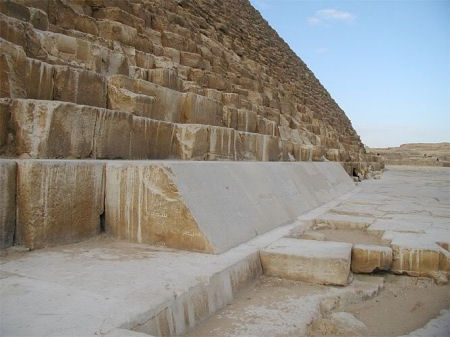
This unique stone is described today as creamy in colour and the denser the stone, the stronger which the densest stones can be found in Tura ie: Old Cairo. The greater the density the less the water absorbed and the cracking load is not much under the breaking load.
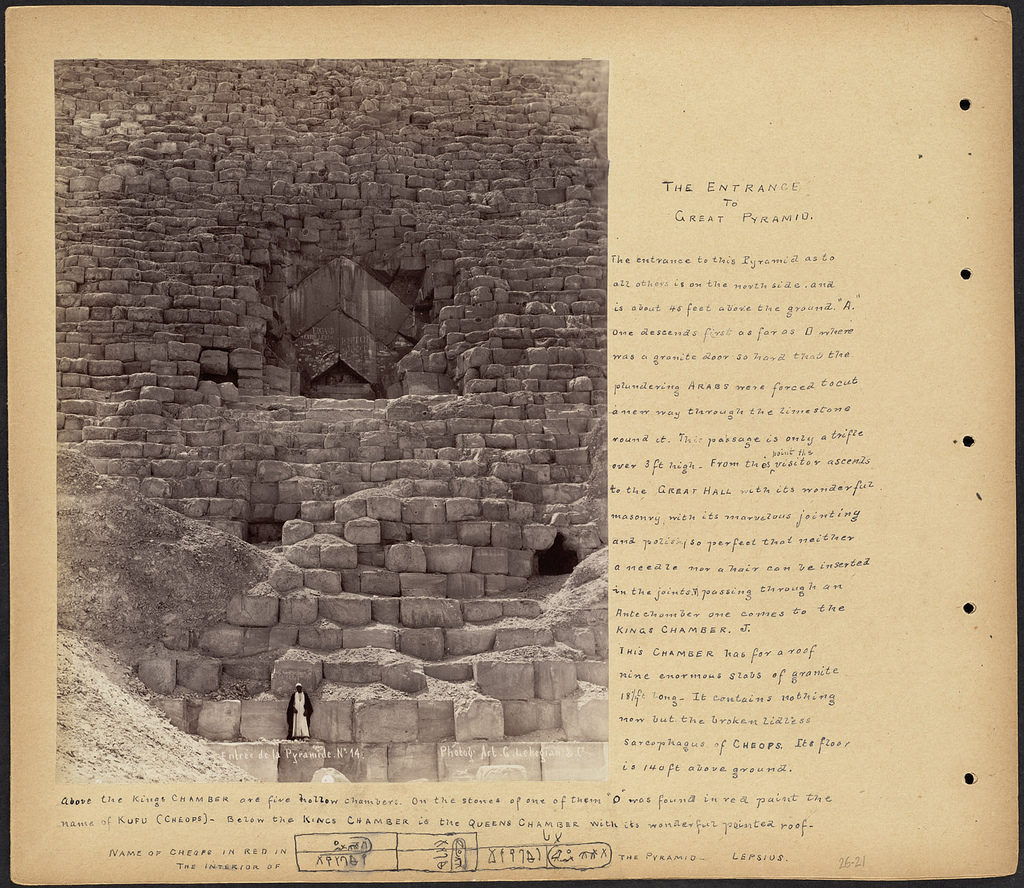
In Etruscan mythology, the “God of the boundary stone” was called “Turm” which can easily be connected with Tur.
A turret (tur-ret) is a little stone tower (from Lat. turris, Gk. rvpaa, tyrsis, riippa, tyrris, tower).
Another precious tur or stone of a beautiful blue colour worth mentioning is called “tur-cois, tur-kis or turquoise” which was highly prized by the Ancient Egyptians, who opened Turquoise mines in the Wadi Maghara, in the Desert of Sinai.
An Arabian authority on precious stones, Ahmed Teifascite, born about 1253, in writing about the turquoise quotes from Aristotle as follows;
“The turquoise is a stone with which the Kings of Damascus never failed to adorn their necks and hands and to employ for many other purposes because, among the great, the stone possesses the property of removing from its wearer the danger of being killed. Furthermore, when reduced to powder it is of assistance in case of stings from scorpions and dangerous and venomous reptiles.”
It appears through time, the words tor, tur, tyr, tir, tora, tura etc. became known to also variously mean mountain, chief, Lord, God, and or prince for their descendants.
For example, in ancient Egypt, the Pharoah had a turdannu (turtan), meaning “commander-in-chief” (POTUS) in charge of the administrative affairs of Egypt.
We find the Anglo-Saxon word fir, and tyr, meaning lord, prince, chief, as well as glory, dominion, power and Tyr in the Edda who was the name of the god corresponding to Mars.
Tur is the meaning of mountain in Aramaic.
The meaning of Tartar is a hard calcified deposit that forms on the teeth and contributes to their decay and also means an unkind or angry person and a member of any of the various tribes, chiefly Mongolian and Turkish, who, originally under the leadership of Genghis Khan.
A Scottish Highlander or Scotsman was known as a “Tartan” in ancient days. These Tartans wore a special type of clothing called tartaryn (“rich material”), from Middle French tartarin (“Tartar cloth”), and Middle French tiretaine (“cloth of mixed fibers”), from Old French tiret (“kind of cloth”), from tire (“oriental cloth of silk”), from Medieval Latin tyrius (“material from Tyre”), from Latin Tyrus (“Tyre”).
There are the gods of Old Asia Minor, Tar and Tarku who are clearly connected with the word Tara or Tora for it is the Esthonian word for “God,” and with Tar, “chief.”
Then we see the Akkadian Tur-an who is the “Chief of the Sky.”
The Report and Transactions – The Devonshire Association for the …, Volume 7 further documents;
Lu Gibson’s edition of Camden’s Britannia, we are informed that Brent Tor is a name signifying ‘a high rocky place.’
Pliny mentions dyr as a Mauritanian word for Mount Atlas. Taurus is the same designation Latinized in Asia.
For the Arabs, Tours is an elevated spot in the Gulf of Suez.
In Norway, Tours is the name of one of the highest mountains.
King—”The word occurs in both Somersetshire {Glastonbury Tor) and Derbyshire, and is apparently cognate with the Hebrew Tsoor = a rock, and the Phenician Tor = Tyre (compare also the Turkish dagh, and the form which occurs so frequently in the Caucasus).” pp. 208-9.
Moore—” Tor. A rude rack [? rock. W. P.] on the top of a hill.”
Bannister—” Torr. Prominence or hill {tor, a belly); a peak {tour, tower); water {dour).” Halliwell—” Tor. A bill. Devon.”
Grove—” Tor. A high rock; as Mam-tor, a high rock in Derbyshire. North.”
Prince—”Brewer, Lord William, was bom …. most likely at Tor Brewer, so called of old from the torrs and rocks which abound in these parts, and this noble family. But of latter times … it is commonly stiled Tor-Mohun.”
The best explanation that I have found similar to my own is by author Sir William Smith in his book, A Dictionary of the Bible: Red-Sea-Zuzims. Sir Smith writes;
“TYRE (nix, n’s, i.e. Tzór: Túpos: Tyrus: Josh. xix. 29; 2 Sam. xxi ‘. 7; Is. xxiii. 1; Ez. xxvi. 15, xxvii. 2, &c.). A celebrated commercial city of antiquity, situated in Phoenicia, on the eastern coast of the Mediterranean Sea, in latitude 33° 17’ N. (Admiral Smythe’s Mediterranean, p. 469).
Its Hebrew name “Tzór” signifies a rock; which well agrees with the site of Sár, the modern town, on a rocky peninsula, formerly an island.
From the word “Tzör” were derived two names of the city, in which the first letters differed from each other, though both had a feature of their common parent: 1st, the Aramaic word Tura, whence the Greek word Turos, probably pronounced Tyros, which finally prevailed in Latin, and, with slight changes, in the modern languages of the West; and, 2ndly, Sara, or Sarra, which occurs in Plautus (Truc. ii. 6, 58, “purpuram ex Sarā tibi attuli”), and which is familiar to scholars through the well-known line of Virgil, “Ut gemmá bibat, et Sarrano dormiat ostro” (Georg. ii. 506; comp. Aul. Gell. xiv. 6; Silius Italicus, xv.203; Juvenal, X. 30).
According to a passage of Probus (ad Virg. Geory. ii. 115), as quoted by Mr. Grote (History of Greece, iii. 353), the form “Sara” would seem to have occurred in one of the Greek epics now lost, which passed under the name of Homer. Certainly, this form accords best with the modern Arabic name of Sár. PALAETYRUs, or Old Tyre.
There is no doubt that, previous to the siege of the city by Alexander the Great, Tyre was situated on an island; but, according to the tradition of the inhabitants, if we may believe Justin (xi. 10), there was a city on the mainland before there was a city on the island; and the tradition receives some colour from the name of Palaetyrus, or Old Tyre, which was borne in Greek times by a city on the continent, 30 stadia to the south (Strabo, xii. 11,24).
But a difficulty arises in supposing that Palaetyrus was built before Tyre, as the word Tyre evidently means “a rock,” and few persons who have visited the site of Palaetyrus can seriously suppose that any rock on the surface there can have given rise to the name.
To escape this difficulty, Hengstenberg makes the suggestion that Palaetyrus meant Tyre that formerly existed; “quae quondam fuit;” and that the name was introduced after the destruction of the greater part of it by Nebuchadnezzar, to distinguish it from that part of Tyre which continued to be in existence (De rebus Tyriorum, p. 26).
Movers, justly deeming this explanation unlikely, suggests that the original inhabitants of the city on the mainland possessed the island as part of their territory, and named their city from the characteristic features of the island, though the island itself was not then inhabited (Das Phönizische Alterthum, vol. ii. gt. i. p. 173). This explanation is possible; but other explanations are equally possible.”
In my opinion, the words whether it be Tzör, Tura, Tora and Tyre, they are all etymologically connected through history to the word stone or rock with similar meanings in various languages and we also find these names of some of the most important coastal and commerce settlements where they have left their cornerstones around the globe which I will explore in a future article.
AN OLD DESCRIPTION OF THE ANCIENT EGYPTIAN TOWN OF TORA (TURA, TYRE)
I thought it would be interesting to the reader to read this account from a book written in 1885 called “Lower Egypt, with the Fayûm and the peninsula of Sinai,” by Karl Baedeker gives us a clear account of the importance of this city. Baedeker writes;
“The railway to Helwān, which was constructed mainly for the purpose of connecting the great military establishments at Tura with the Citadel, runs from the Place Méhémet Ali, in a South direction. It skirts the base of the Mokattam, on the slopes of which are the interesting ruins of a mosque, and traverses the burial-ground of the Mamelukes (p. 327). To the right lies the oldest part of Cairo, with the Mosque of Tulān (p. 265).
On the same side, we next observe the Necropolis of Imām Shafe’i (p. 327), beyond which is the valley of the Nile, with the various groups of pyramids rising above it (p. 404). Before reaching (4 M.) Basātīn, a village situated in one of the angles of a triangular piece of arable land which extends a considerable way into the desert, we perceive the Jewish burial-ground on the left, and, farther on, the broad Wädi et-Tih (p. 339), which separates the Mokattam range from the Gebel Tura.
Traversing a tract of desert sand, the line approaches the Nile, on which lies the village of Tura.
A little to the right are the large military establishments and gunpowder mills. On the hill stand the ruins of an old fort. 91/9 M. Massara, a village on the Nile, is noted for the slabs of stone obtained in the neighbourhood, known as ‘palattes’, and used for paving purposes in almost every house of the better class in Egypt.
From either Tura or Masara we may visit the Quarries of Tura (p. 405), which yielded material for the construction of the ancient temples, and are still worked.”
THE EGYPTIAN TYRE, TURA, AND TURSHA CONNECTIONS
The Masons have left their stones of Tura (Tyre) that were used for many building projects who some estimate for approximately six thousand years at least. It was said that the architects of the pyramids made their quarrymen (Masons) tunnel into the mountains for hundreds of yards until they found a bed of stone suitable for their work, and traces of their excavations are still visible to this day.
Upon the ancient Egyptian monuments dated in approximately as early as 1300 B.C. or before, you will find the men of Tyre are called by the name the “Tuirsha, Tursha and or Turusa” who are clearly classified as a “maritime people” who had “invaded Egypt” and are listed as among the enemies of Egypt.
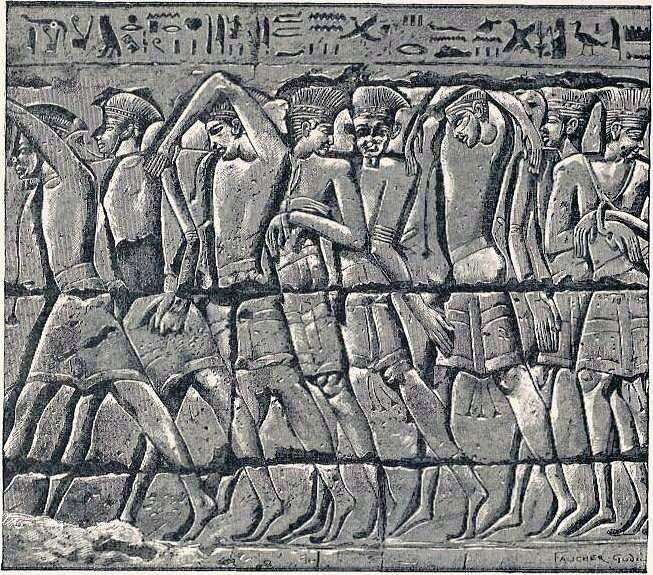
It is documented that during the reign of Meneptah, the Tursha invaded Egypt from the coastlands in alliance with the Libyans, Achaeans, and other coastal tribes from Asia Minor. It is said in the great inscription which records the defeat of these “Sea Peoples” or who we may now call the “Tyranian invaders.”
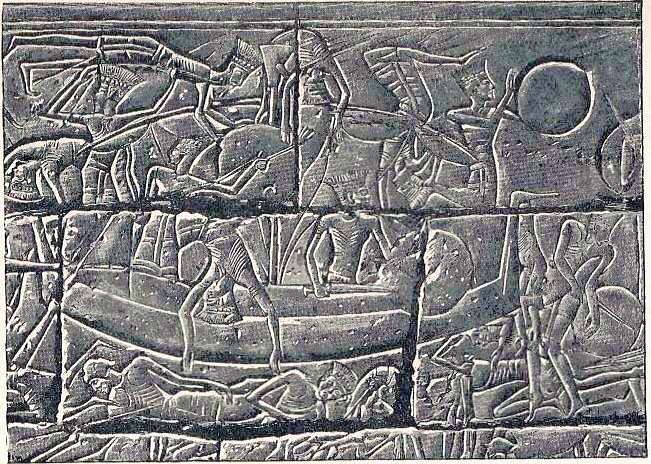
“The Tursha took the lead in this war, all the warriors from that country having brought their wives and their children.”
The fact that the Tursha (Men of Tyre) found a home in Egypt from the West by the time of Rameses III during the so-called great invasion of Greco-Asiatic and European tribes which has been generally accepted by most historians.
It is the mysterious but powerful people the Egyptians called the Tursha whom I have connected to the royal family of Tyre and their book, the Torah (Tura or Tora).
We that Moses upon his entrance into the Promise Land on top of a Holy Mountain (rock) was given the history and laws of his people that he had written down on “stone tablets.”
Stone tablets that are said to be composed of five books that are collectively called the “Tora.”
It is evident that these special stones or Tora (Tyre) play a significant revelatory clue to the immortal origins of these people and serve as cornerstones for future prophets to identify and reconcile this lost but revealable history.
These facts I believe can be further substantiated via a discovery made in 1889 when an Egyptian archaeologist named Mr. Flinders Petrie AKA Rock or Stone 😉 was excavating at Gurob in the Fayoum where he exhumed what has been described as a “yellow-haired mummy.”
This blonde person is described in the hieroglyphs as a high or ryal official who is called Ш, wml Ё Ш Ъ Ш l, “An-Tursha”, “Anen-Tursha” or “Stone, Rock or Pillar of the Tursha”, who, according to the rest of the inscription, was governor of Heliopolis.
The yellow hair ie: blonde hair and the lower lobe of “An-Tursha or Anen-Tursha’s ear is pierced indicating his foreign ethnicity which I believe to be of Tyrian origin.
To be a governor of Heliopopolis, you had to be a very important person who was in charge of all Lower Egypt and the coastal ports as well as the country’s religion and the Pharoah’s stonemasons.
The native name of Heliopolis was I͗wnw (“The Pillars or The Stones”) which again connects to the people of stone ie: Tyre (Tur, Tor, Tora etc) to Tura, Egypt and also the Tursha (Sea Peoples). In Roman Egypt, the city belongs to the province Augustamnica, causing it to appear as Heliopolis in Augustamnica when it needed to be distinguished from Baalbek. Today, it remains a titular see of the Roman Catholic Church.
The mummy, Anen-Tursha is described in The Discoveries in Crete and Their Bearing on the History of Ancient History by Ronald Montagu Burrows who says that the Tursha can be connected “with the group of names of invading tribes which can now with scarcely a doubt be equated with Achaeans, Teucri, and Danai.”
Burrows had written;
“It has been known for some years that there was buried in Egypt, at Gurob in the Fay urn, not much later than 1300 B.c., a high official called An-Tursha, or ” Pillar of the Tursha.”
The name is followed by the ethnic and the country determinatives, and the type of the mummy’s face, and the piercing of the lower lobe of its ear, are recognised by Professor Petrie as non-Egyptian.
It has been argued that this implies a settlement of foreigners called Tursha in the neighbourhood, and the name has been connected with the Thuirsha or Turusha who trouble Egypt with the Akaiuasha in the reign of Merenptah, 1234—1214 B.c.’ The name thus falls into line with the group of names of invading tribes which can now with scarcely a doubt be equated with Achaeans, Teucri, and Danai.”
Biblically speaking, if the Tursha are who I believe we can connect to the Men of Tyre and can also possibly be equated with the Danai ie: the Tribe of Dan, we can start to make more revelatory sense of this confusing history to make ORDO AB CHAO.
In researching both men of Tyre and Tribe of Dan, you will find that they were an interrelated royal family of mariners, shipbuilders, Masons, and judges of their people (race) through a very important son who in the bible is called Obed or Obediah and the Widow’s Son and Masonically speaking, he is known as Hiram Abiff who it is no surprise to me is also known as the Widow’s Son.
These connections can be found in the Scripture in the seventh chapter of the first book of Kings where it says;
“And king Solomon sent and fetched Hiram out of Tyre. He was a widow’s son of the tribe of Naphtali, and his father was a man of Tyre, a worker in brass: and he was filled with wisdom, and understanding, and cunning to work all works in – brass. And he came to king Solomon, and wrought all his work’ (ver. l3, l4).”
The connection to the Tribe of Dan is found via another parallel passage in the second chapter of the second book of Chronicles, ver. 13 where it says;
“Now I have sent a cunning man, endued with understanding, of Huram my father’s,’ (or perhaps Humm Abi by name,) ‘ the son of a woman of the daughters of Dan, and his father was a man of Tyre, skilful to work in gold.”
In researching the Sea Peoples known in ancient Egypt as the Tursha, you can clearly see how these same foreign yellow-haired people can be connected to the Men of Tyre which as I have mentioned can also be spelt, Tir, Tyr, Tar, and or Tur. Not only were the Tursha Sea People who were masters of the sea ie: boat builders and navigators, they were also classified as being stonemasons and traders ie: businessmen.
Several slabs of rock (Tora) bearing figures and hieroglyphics have been found in one of the great stone halls of Tura, Egypt.
An inscription on one of the chambers tells us that during the reign of Amenophis III. a new part of the quarry was opened. Una, an officer who lived in the reign of Pepi I., was sent to Tura by this king to bring back a white limestone sarcophagus with its cover, libation stone, etc.
In one presentation, it shows King Amenophis III. (18th Dynasty) sacrificing to the gods Ammon, Horus, and Hersheft; and on the other we find him worshipping Ammon accompanied by Anubis, Sekhet, and Hathor.
An inscription on one of the massive stone slabs reads;
“His Majesty ordered new halls (het-u) to be opened, for the purpose of quarrying the light-coloured and excellent stone of An for the construction of his buildings founded for perpetuity, after His Majesty had found that the halls of Rufui (Troja) had been tending to great decay since the time of those who had existed at the beginning (i.e. former generations). These were newly established by His Majesty”.
Another inscription from the time of Pharoah Nectanebus II., reads thus;
“This excellent quarry of Rufu was opened in order to construct the temple of Thoth, the twice great, the double Aperu, the fooler of the divine speech, etc. May (its) continuance be everlasting!”
Hence, “And I also say to you that you are Peter, and upon this rock, I will build My church; and the gates of Hades shall not overpower it.” (Matthew 16:18).
MY APOCALYPTIC CONCLUSION
It is obvious to me that the name that Masons hold to this day as one of their most important Kings, Hiram Abiff hails from a city that is variously called Tyre, Tyrus, Tarshish, and as we have learned from this research, we can also add Tora to the list.
Given the fact that they are Masons of whom their ancient ancestors were Stonemasons who hail from the city of the stone, Tora, Egypt which can also be called Tyre, Egypt and now can be used interchangeably.
It is revealed to us that these ancient people we know variously as the Men of Tyre and the Stonemasons of Tora have a longheld tradition going back approximately 3,300 years of holding onto their true names relating to the “stone” said in different languages but all relating to one another.
For example, we find evidence of these same Stonemasons of Tyre (Tora) more recently in ancient Ireland in an important location under their name that was anciently called Tyr-Owen, Tyroot and today, Tyrone which is now an inland county of the province of Ulster, in Ireland once known as Tyr-Owen, and was the territory of the O’Neills, descendants of Neal of the Nine Hostages, king of Ireland, and virtually sovereigns of the greatest part of the north of Ireland for several centuries after the English settlement under King Henry II.
The Penny Encyclopædiarecords this history;
“In a writ of Henry III., the head of the sept is styled King of Kenilum or Tiroen.
The chief seat of the family was at Dungannon, which, though several times taken and sacked by the English force in their attempts to reduce the country to obedience to the royal authority, continued to be so until the close of the reign of Elizabeth, when it was burned by IIugh O’Neill, earl of Tyrone, to prevent its falling into the hands of Lord Mountjoy, who then commanded the queen’s forces in Ireland.”
In the next part of this article, I will attempt to explain how these Ancient Masonic Tyranians of Tora, Egypt can be connected to the Masonic Tyranians of the Promise Land on the Holy Island of Crete.
PART II: They have laid Tyre’s “stones and dust in the midst of the water” (Ezek. xxvi. 12).

Moe is the founder of GnosticWarrior.com. He is a father, husband, author, martial arts black belt, and an expert in Gnosticism, the occult, and esotericism.

